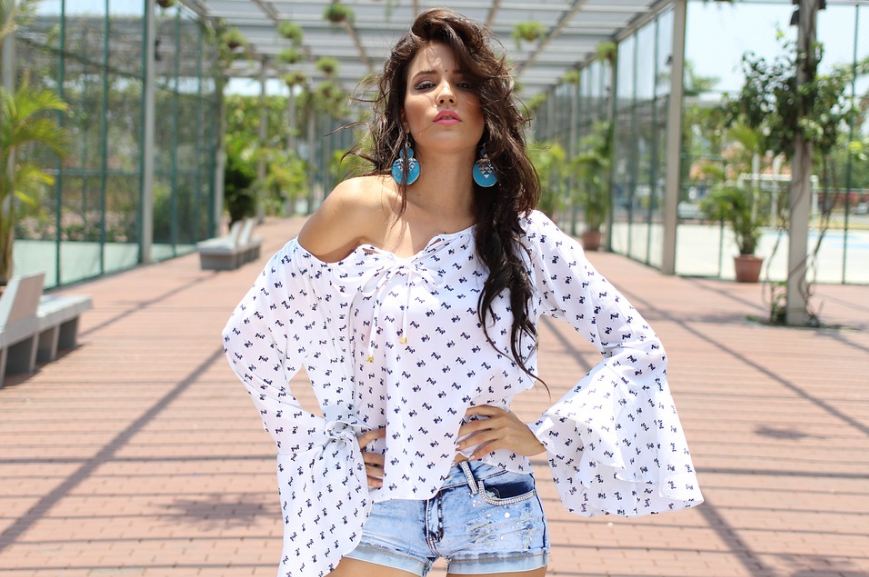Blouses are loose-fitting upper garments that most women wear today. In our article about the Interesting Facts About the 1950s Fashion Scene, we’ve mentioned that blouses are quite fashionable during the 1950s. This is true, even though some people back then might have considered specific designs a bit risqué before that decade. Today there are many different styles of blouses that we can buy, and they are also often worn not just for fashion but as well as for uniforms.
But did you know that before blouses became the ones that we use to wear in the present time, they were first worn by workmen, peasants, and artists? If you’d like to learn more about its origins, you’re in the right place. Today, were are giving you more information about the history of blouses. Also, check out the seven fashion trends that will always remain in style here.
The Etymology of the Word Blouse
The word “blouse” is a loan word from French to English. It originally referred to the blue blouse worn by French workmen. The term began to be applied to the different smocks and tunics worn by English farm laborers. When 1870 came, the blouse was first referenced as being “for a young lady.” In addition to that, it is also suggested that the French form of the word “blouse” comes from the Latin pelusia, from the town of Pelusium in Egypt, which was a manufacturing center in the Middle Ages.
History of Blouses
Blouses were seldom part of the stylish woman’s wardrobe until the 1890s. Before that, blouses were occasionally popular for informal attire in styles that echoed peasant or traditional clothing, like the 1860s Garibaldi shirt.
Light fabrics like silk or thin cotton fabrics were usually used in making blouses until the early 1990s when they are often made of softly falling synthetic fibers like polyester. There were times when blouses were decorated with frills, loops, or embroidery. The classic of the blouses for ladies is the white shirt blouse, which followed the classic elegant white men’s shirt. Some of the other types of blouses were the open spade, peter pan, revere collar, and reverse collar.
The sailor blouses became popular at the end of the 19th century. They were derived from sailor suits and were popular for girls to the blue pleated skirt. However, in the time of National Socialism, it was rejected as a bourgeois-decadent. The sailor’s look then entered the leisure mode for adults in the 1950s.
In the late Victorian period, blouses became more common for informal and practical wear. The standard dress for the newly expanded female workforce of the 1890s was a simple blouse with a plain skirt, especially for those employed in office work.
When the 1900s and 1910s came, elaborate blouses like the lingerie blouse and the Gibson Girl blouse with tucks and pleating became very popular for daywear and sometimes even for informal evening wear. From that time on, blouses have remained a wardrobe staple. Read the five tips to get a perfectly fitting Saree blouse by clicking the link.
Styles of Blouses Since World War Two
In the 1920s, various new and different forms of collars emerged. By the 1950s, they diminished in size but were huge in the 1930s. At the start of the 1960s, bubic bangs came back, then later wide collars. When the 1970s began, some of the popular styles included the rounded collar, sausage dog collar, and extra-wide collar. There were also double cuffs from shirts. In the 1980s, the fashion of standing collar and federal collar attached folds and stressed set-in followed. In the 1990s, blouses with three-quarter arms were a striking phenomenon.
Towards the end of the 20th century, extra-long blouses were in. They were worn over pants or skirts and combined with a rather wide belt around the waist in the United States, Germany, Denmark, Poland, and the Netherlands.
The sleeves of blouses were reduced in the 1950s but were decreased again in the mid-1990s until they are now regularly at the 7/8, ½, 1/3, and ¼ length around the world. Many designers also used the sleeve length to focus the mind’s eye on the slimmer parts of the arm, especially short sleeve blouses below the elbow to provide the illusion of a slimmer arm.
During the mid-2000s, sleeveless tops were fashionable and a topical item in Western Europe and North America. There are many fashionable styles from both the 1970s and 1980s that were on trend again after the millennium in blouse fashion. Some of these include an extra-wide pointed collar, double cuffs, and belt around the waist. Many blouses also usually have embroidery or crystal stocking, especially in the collar and string.
Today, wearing blouses is quite common for many people. They are worn for work, for fashion, and more. They can be paired well and easily with sweaters, tank tops, blazers, and boleros. They can also look great with or without colorful silks or bead chain necklaces.
Conclusion
It’s amazing to learn that blouses used to be clothes worn by peasants before they became the stylish pieces of clothing that we usually wear today. In the present time, there are countless types and styles of blouses you can find in the market. There are blouses made for casual and everyday wear, there are blouses made for work, and there are blouses made for semi-formal and formal occasions. We hope this article helped you learn more about the history of blouses.

